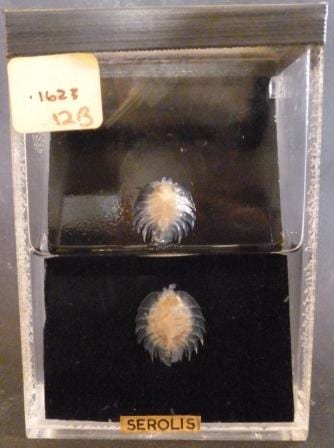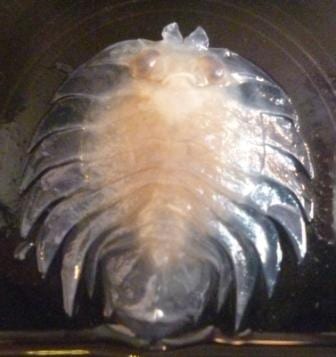Specimen of the Week: Week Ninety-Two
By Emma-Louise Nicholls, on 15 July 2013
 Eight blogs away from the big 1-0-0! In the run up to the 100th blog I am going to bring to you the top ten specimens at the Grant Museum, as voted for by…. me. I have employed strict criteria with which to segregate the top ten from the other 67,990 specimens that we have in our care…
Eight blogs away from the big 1-0-0! In the run up to the 100th blog I am going to bring to you the top ten specimens at the Grant Museum, as voted for by…. me. I have employed strict criteria with which to segregate the top ten from the other 67,990 specimens that we have in our care…
1) It must not be on permanent display, giving you a little behind-the-scenes magic, if you will, as the specimen will then go on display for the week of which it has been named ‘Specimen’. Oh yes. That’s almost as good as our exhibition It Came From The Stores. Almost.
2) It must have at some point in the past made me say ‘woooo’ out loud (given my childlike disposition for expressing wonderment at the world at large, this is not necessarily a hard qualification for the specimen to achieve)
3) I must know (at least in a vague sort of a way) what species the specimen is, as SotW is researched and written within a strict one hour time frame.
With that in mind, at Number Nine, this week’s Specimen of the Week is…
**The Serolis**
1) The wha..? Imagine a trilobite. Here’s a helping hand. Those friendly looking overgrown woodlice-esque creatures that roamed the seas of days gone by. Looooooong by. (They copped it 250 million years; one of the many groups that helped to give the extinction at the end of the Permian era the prefix ‘mass’). Well, Serolis looks just like one of those, only it’s not one. Actually not a great deal is known about serolids. But I shall tell you what I know…
2) Serolis is a genus of aquatic isopod, which means single type of foot. They are a group of, most commonly though not always aquatic (the rest being terrestrial) crustaceans that have fourteen legs. More familiar ones would be woodlice. Fun fact- although all adults have 14 legs, many species of isopod are born with two legs fewer. Peculiar. Crustaceans are the lobsters, crabs, barnacles, etc, plus of course, the isopods.
3) Serolis is a bottom dweller (not an insult). It lives either on or just below the sediment surface and prefers (for obvious reasons of burrowing ease) softer substrates.
4) Serolids reproduce by laying eggs. The females tend to lay their first clutch of eggs at around the age of 2 years, though the precise age of sexual maturity varies between species. The number of eggs is apparently proportional to the size of the female who laid them. I can also tell you that Antarctic species are larger than those found in temperate waters, meaning of course (if you were paying attention) that Antarctic species lay more eggs than their temperate zone counterparts.
5) All species of serolid are predators. They feed on smaller invertebrates and are, their researchers say, an integral part of their ecosystem, especially in the Antarctic waters where environmental conditions make life, well, hard.
Emma-Louise Nicholls is the Museum Assistant at the Grant Museum of Zoology
 Close
Close



